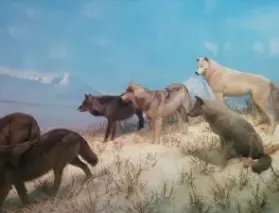(This article is by guest writer Leigh Anderson. For a short bio, see below.)
I’ve lived in the same place the last seven years and I now observe specific things as “signs of change”. A slowdown in the daily breeze indicates a forthcoming change in the weather. New buds forming on the pear tree indicates a change in the seasons. Deer which were once seen all day and are now disappearing, indicates that hunting season is near. This morning I heard the Chuck Will’s Widow, a bird of the nighthawk family, outside. I checked my journal from last year. Yes, it appeared on April 4th last year. It was right on time. I was expecting it. With all the time afforded me at home because of the pandemic, and all the signs I notice around me, I still feel that I’m sleepwalking through life at times. I like to think I’m being mindful when I can, but I realize that I’m not using all my full resources to be present.
In his article Mindfulness and the Environment, Thomas Schenk discusses using the five senses as you move through your environment. I know I need to do that, but still feel a need for some extra structure around the effort. As hard as I try if I don’t write things down, I feel as if my thoughts go into my brain and 98% of them exit within minutes.
I knew I needed a more structured method and found it in a recent book. In Writing Wild: Forming a Creative Partnership with Nature, Tina Welling takes you through her method for using your senses to experience your world. She uses examples and repetition to expand upon her method throughout the book. It is a book about mindfulness as much as it is about nature writing. She introduces her method by explaining how she observed a dewy spiderweb one morning and realized that it symbolized the interconnectedness of the earth’s creative energy and her own creative energy. She then goes on to observe more of these connections and crafts a method to better help her remember and understand them.
Welling gets right to her method in the book and talks about a three-part formula for a Spirit Walk, her name for mindful walks in nature. The steps are naming, describing, and interacting. The steps correlate to the three parts of the brain: reptile, midbrain and neocortex. If the information we receive makes a successful journey through each of these parts, it ends up in our conscious awareness.
It made sense to me to name and describe things. This is what I would normally do with my observations when I wrote about them. But I hadn’t thought about interacting with my surroundings. This would pull me from being a passive observer to being an active participant. Welling goes on to talk about how interacting with what you are observing helps to recall old memories and feelings, and thus create new ones.
She goes on to expand upon the three steps.
Briefly, In Step 1, Naming, you go outside and use all five senses to quickly make a list of what you see, hear, smell, taste and feel. One-word lists are fine.
In Step 2, Describing, you go for a walk outdoors. The walk can be any length, but you should stop when you feel like it. At this point choose something in your environment (her examples are stones, twigs, flowers, leaves, anything you can touch or handle) and not only describe the object with your five senses, but how you are feeling as well. Not specifically how you are reacting to the object, but how you are feeling in general after walking and being outdoors. Are you comfortable? Are you out of breath? Are you relaxed or do your muscles ache? The point here is to notice how your body is responding to nature as well as noticing things in nature.
In Step 3, Interacting, you now walk with the awareness of your senses, your surroundings, and your emotions. You walk until you realize you are recalling a memory, feelings or emotions, or having thoughts connected a past event. At this point you stop and think about what prompted the memory or connection and write it down.
You don’t have to go through all three steps on the same day, but I recently decided to do so on one of my daily 3-mile walks. At times I complete my whole walk and return home wondering how the time went by so fast without noticing anything, so I wanted to see what happened when I was being purposely mindful.
I walked the first 1.5 miles without stopping to note anything. My general habit is to observe things during the first part of the walk. But since I am returning down the same path afterwards, I rarely take notice of anything afterwards. At the halfway point I stopped as usual and made my list. Since it’s spring there was plenty of new growth and flowers. There were scattered clouds with some looking to become rain clouds. Walking through the forest I smelled a cinnamon scent from the pine trees after a controlled burn. That’s the only time I ever smell that scent. I could hear a hawk in the sky and remembered the Chuck Will’s Widow I heard in the morning. I sat on a fallen log and felt the smoothness of the scraped trunk and the roughness of the remaining bark. The wind was slightly cool. I tasted the water from my water bottle, and I was refreshed.
Taste is the sense that I don’t use as much outdoors except for outdoor grilling. For this reason, I purposely chose a blossom from a black berry bush figuring it was safe to taste for the second step. The blossoms are a beautiful creamy white which in no way indicates the dark black berries that are to come. The petals were soft and smooth, almost cushiony like a rose petal. There was only a faint scent and even less of a taste. I don’t know whether it’s me or not, but it’s hard to describe what a petal tastes like. Maybe like a very, very thin slice of a raw mushroom. Yes, it’s a bit earthy but there’s still not much of a taste. But that did remind me that the scent was earthy. You can tell when something has been freshly picked by the scent and the taste. I guess that’s what I was supposed to realize. As for how I felt, this was a standard walk for me, and the weather was very cooperative. As I sat down and rested my breathing was even (I had a fitness app to confirm that) and I was cooling down. Dark clouds even brought in a slightly cool breeze. I felt good.
For step 3, I walked back the same way I had come, waiting for something to trigger a thought or a memory. Sometimes when you try too hard it defeats the purpose. I arrived at the stream half a mile from my house with nothing. My dog was glad for the cool respite, though. She lay in six inches of the clear stream and seemed to be smiling at me. She’s found her joy, I thought. She’s living in the moment. Her happiness in the water reminded me of when I was young, and my mother sent me to swimming lessons.
I loved swimming as long as the water didn’t go over my head. I was dearly afraid of deep water. The last day of class we were supposed to jump off the diving board into the instructors’ arms and he would get us safely back to the side of the pool. It was an exercise in trust. I couldn’t do it. I felt my mother’s disappointment. I remember my mother then, as compared to my mother now. She has dementia.
Rebecca Solnit wrote in The Faraway Nearby of her mother’s journey through Alzheimer’s Disease, and that towards the end of the disease “she had achieved something of the state people strive for through spiritual practice: a lack of attachment to the past and future and a wholehearted participation in the present. It had come as part of a catastrophic terminal illness, not a devotional pursuit …” I thought of my mother then and my mother now who seems happy until she attempts to say something and realizes she no longer knows what word is needed to finish the sentence. I will supply a word that seems to fit, and she always tells me, yes, that’s the word I was looking for. She’s happy once again.
I realized that I have memories like this often as I take my walks, but I never write them down. I usually return home and immediately start doing things around the house and the thoughts disappear. Being mindful of the connections I was making and writing them down not only helped me to remember them, but I see how they will help me connect more things in the future. The point of the book is learning to recognize the interconnectedness of earth’s creativity. It certainly helped me to be more mindful and connect my memories with the present. Writing them down may help in my own future when I may or may not be able to remember these things on my own.
Being mindful is about focusing on the present using all your senses, and by doing so better understanding the interconnectedness of everything, including memories. Understanding the connections helps you navigate your own path as you move from the past through the present and into the future.
Subscribe to The Spiritual Naturalist Society
Learn about Membership in the Spiritual Naturalist Society
__________
The Spiritual Naturalist Society works to spread awareness of spiritual naturalism as a way of life, develop its thought and practice, and help bring together like-minded practitioners in fellowship.














